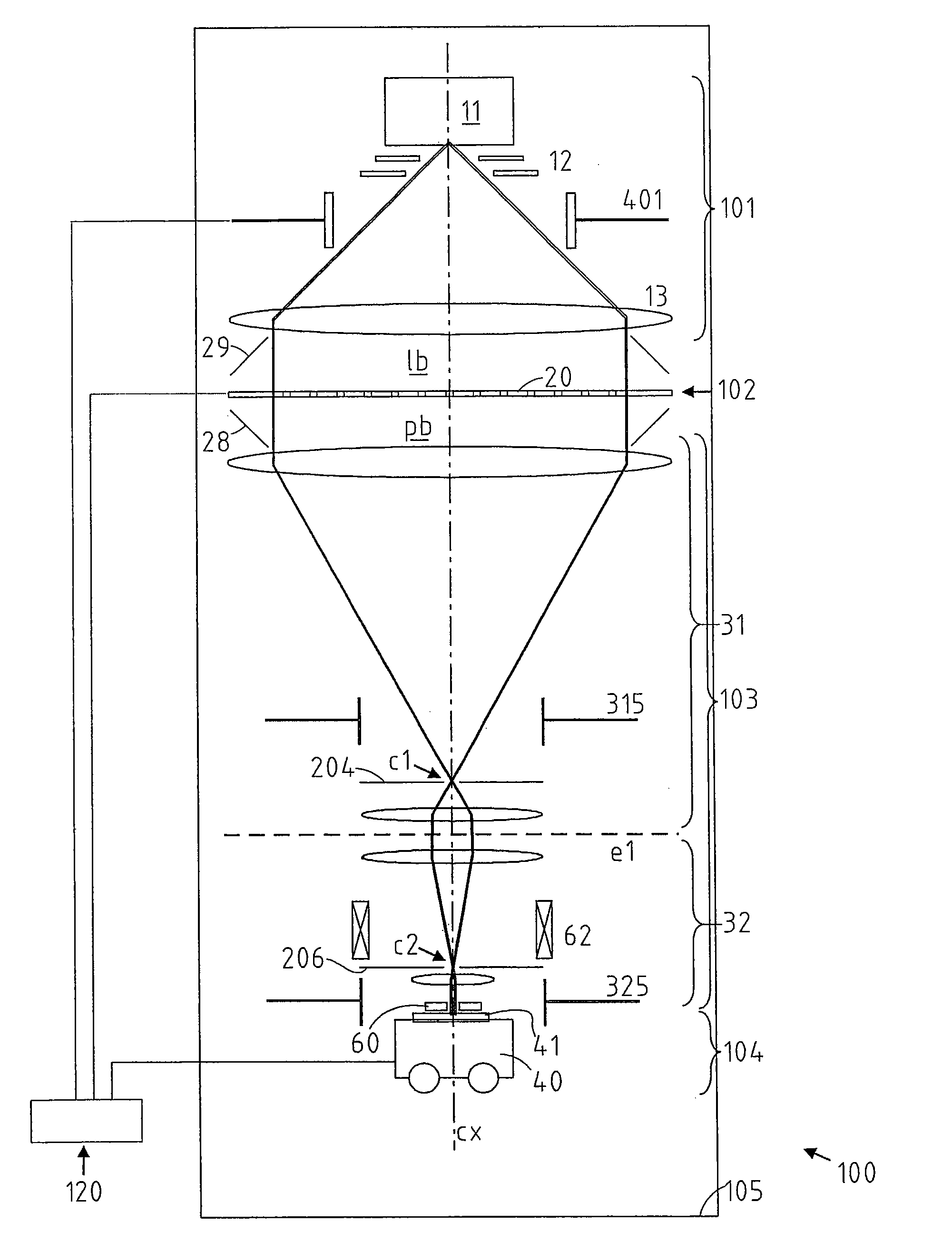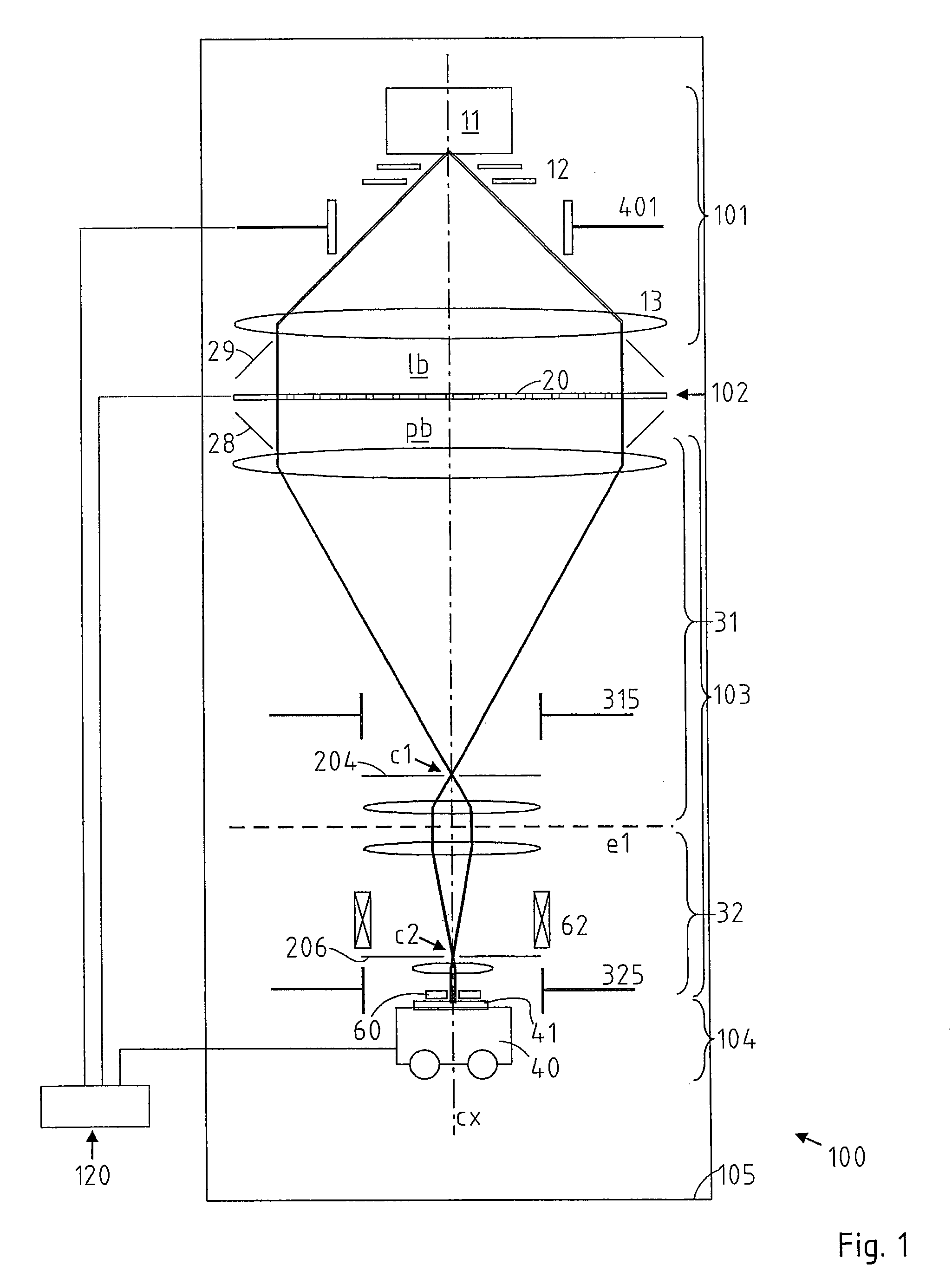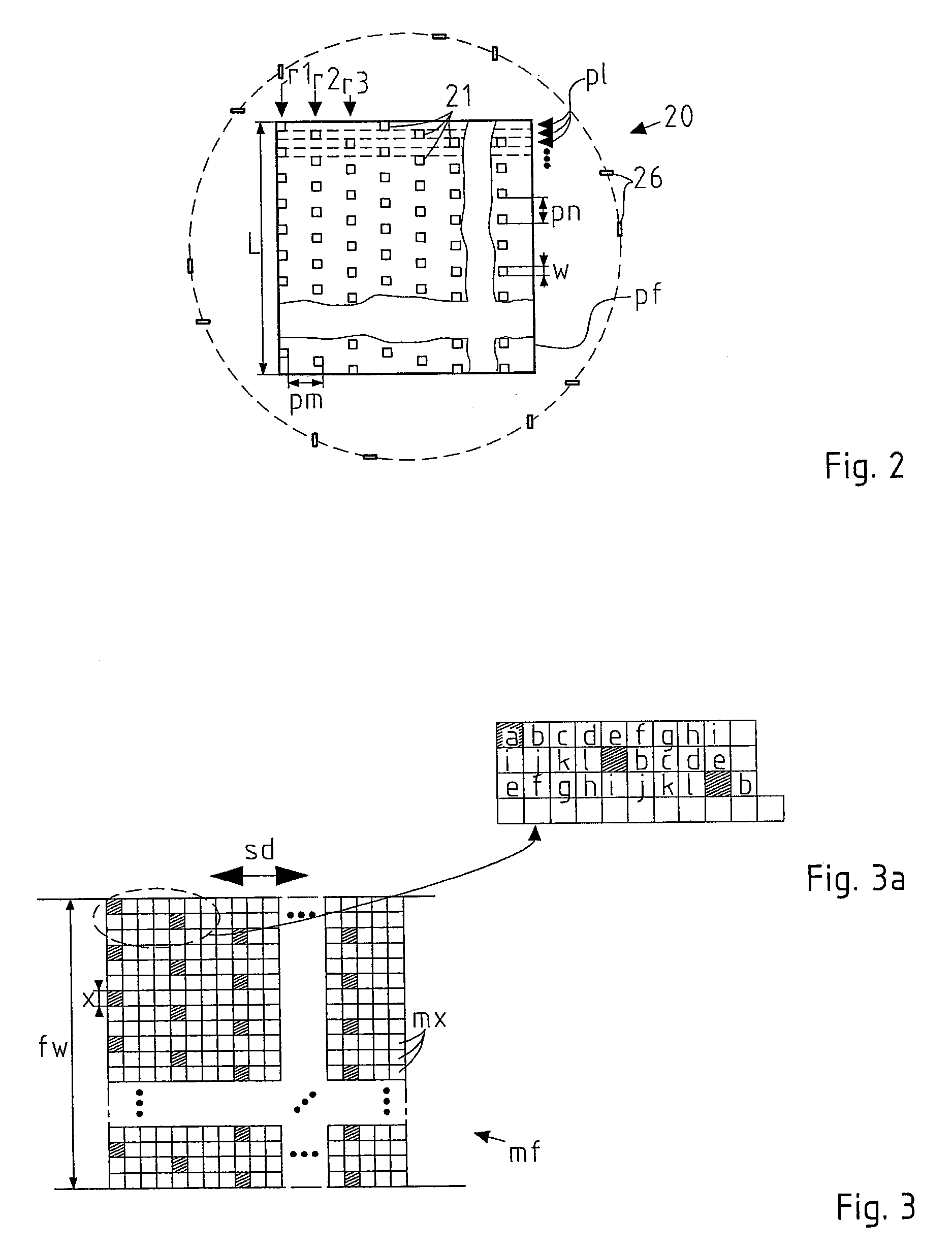Particle-beam exposure apparatus with overall-modulation of a patterned beam
a patterned beam and exposure apparatus technology, applied in the field of charged particle exposure apparatus, can solve the problems of difficult to achieve the timing precision of all beamlets in the range, complex internal structure, and prone to unwanted disturbing effects,
- Summary
- Abstract
- Description
- Claims
- Application Information
AI Technical Summary
Benefits of technology
Problems solved by technology
Method used
Image
Examples
Embodiment Construction
[0055]The preferred embodiment discussed in the following is based on the pattern definition (PD) system disclosed in the U.S. Pat. No. 6,768,125 and GB 2408 383 A, and the teachings of both these documents with regard to the architecture and operation of the PD device, and in particular the architecture of its blanking plate, are incorporated by reference herein. In the following, the technical background of the PD system, as far as relevant to the invention, is first discussed with reference to FIGS. 1 to 6 (which were taken, with modifications where appropriate, from the mentioned patent documents), then the preferred embodiment of the invention is illustrated in the additional Figures. It should be appreciated that the invention is not restricted to the embodiment discussed in the following, which merely represents one of the possible implementations of the invention.
[0056]FIG. 1 shows an overview of a lithographic apparatus on which the invention is based. In the following, onl...
PUM
 Login to View More
Login to View More Abstract
Description
Claims
Application Information
 Login to View More
Login to View More - R&D
- Intellectual Property
- Life Sciences
- Materials
- Tech Scout
- Unparalleled Data Quality
- Higher Quality Content
- 60% Fewer Hallucinations
Browse by: Latest US Patents, China's latest patents, Technical Efficacy Thesaurus, Application Domain, Technology Topic, Popular Technical Reports.
© 2025 PatSnap. All rights reserved.Legal|Privacy policy|Modern Slavery Act Transparency Statement|Sitemap|About US| Contact US: help@patsnap.com



